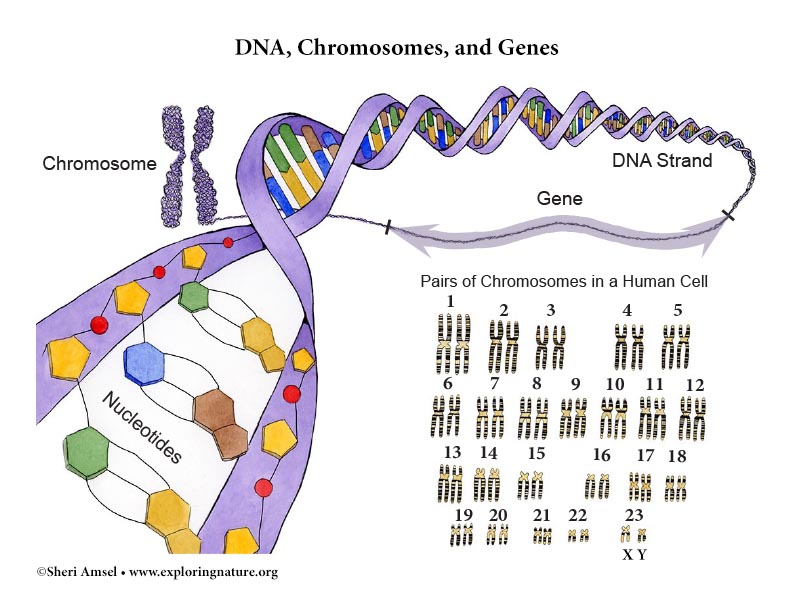

The human body is made up of millions of cells. Inside each cell are tiny organelles that carry out the functions required to sustain an organism’s life. The nucleus is the organelle that contains our genetic material in the form of 23 pairs of chromosomes (46 total). Every chromosome is a very long strand of DNA.
DNA is made up of tiny molecules called nucleotides that are hooked together. Their sequence provides the blueprint (code), for building all the proteins in the cells. Proteins do not just make up the physical structures in the body. They form enzymes, which control and carry out nearly all chemical processes and reactions in the body. So, proteins provide the structures and functions the body needs to run smoothly.
Sections of the DNA strand form our genes – the basic physical unit of inheritance passed from parents to offspring. Humans have more than 20,000 genes arranged on their chromosomes.
Because we get two sets of chromosomes – one set from each parent, it means that we actually have two sets of genetic instructions – two variants of each gene. These two variants are called alleles. Matching alleles are found in the same location on each of the paired chromosomes – one from each parent. The two alleles of any gene may code for the same or different forms of the same trait (e.g. curly hair or straight hair).
Test your knowledge with DNA, Chromosomes, and Genes - Short Answer Quiz.
When you research information you must cite the reference. Citing for websites is different from citing from books, magazines and periodicals. The style of citing shown here is from the MLA Style Citations (Modern Language Association).
When citing a WEBSITE the general format is as follows.
Author Last Name, First Name(s). "Title: Subtitle of Part of Web Page, if appropriate." Title: Subtitle: Section of Page if appropriate. Sponsoring/Publishing Agency, If Given. Additional significant descriptive information. Date of Electronic Publication or other Date, such as Last Updated. Day Month Year of access < URL >.
Amsel, Sheri. "DNA, Chromosomes, and Genes - Illustrated" Exploring Nature Educational Resource ©2005-2024. December 13, 2024
< http://www.exploringnature.org/db/view/DNA-Chromosomes-and-Genes-Illustrated >
